Below is a print ad from one of the greatest beer advertising campaigns in modern times.
And chances are, you won’t think much of it.
See what you think:
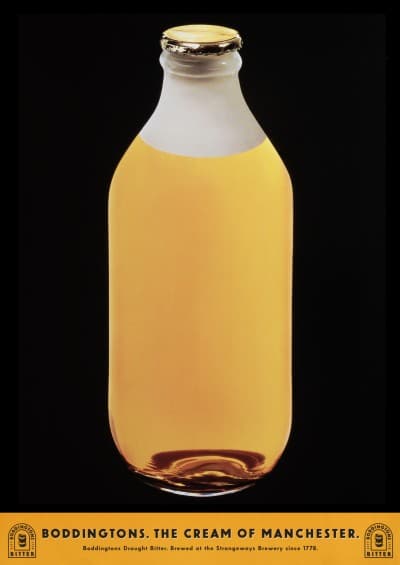
So why doesn’t this ad strike you as obviously brilliant?
Granted, it’s hard to judge a print campaign by a single ad because the power lies in the cumulative effect.
So, check out a few more ads:
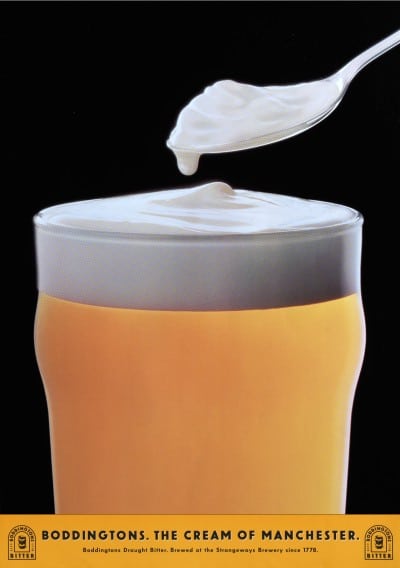
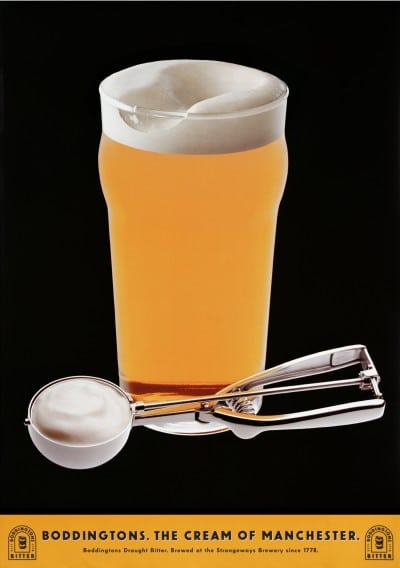
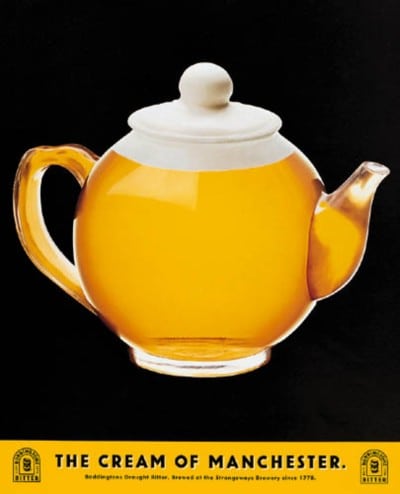
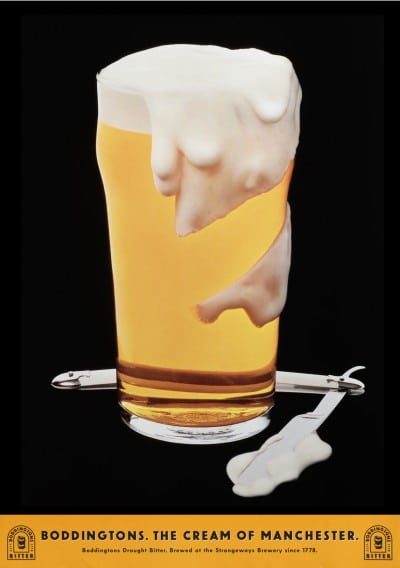
Are you starting to get it now?
If not, you’re probably expecting something else from a “greatest of all time” beer campaign.
Perhaps a more intense form of humor or entertainment?
And on that front, the TV ads from this campaign did deliver with characteristically dry humor:
Or perhaps you were expecting more of a reason-why pitch on how Boddingtons is the best possible beer to drink.
Regardless of what you were expecting, here’s what you’re likely NOT noticing about these ads from Bartle Bogle Hegarty’s “Cream of Manchester” campaign:
- How well they stand out from the clutter of other print ads, both in general and within the category.
- Their effective use of Brand Codes to make the ads instantly recognizable and memorable, specifically the golden yellow color, creamy head, and the phrase “The Cream of Manchester.”
- The social engineering which implies that everyone else already believes Boddingtons to be the best and most famous beer from Manchester.
But while these are important elements to recognize in an already created campaign, they probably won’t help you create a similar campaign from scratch.
What will do that are these three simple guides:
1. Is the Big Idea Simple and Easy to Grasp?
It’s impossible to come up with endless variations on a complex message.
Or to get a complex bit of high-end analysis to stick.
Or to attach the right associations and emotions to complicated arguments.
You need simple ideas with emotional punch for that.
This is why most Big Ideas aren’t big in terms of complicated or grandiose. Rather, they are big in terms of their impact, and therefore much more likely to be “instantly grasped bits of shared humanity that are easily associated with the product.”
And a hometown’s tribal pride in a (presumed to be) famous export fits the bill.
2. Is the Big Idea Inherently True?
In England, many Northern beers have a creamy head on them. In the south, that’s not so much the case.
In fact, the brewery actually instructed the agency NOT to focus on the creamy head. They were worried that pub goers would think more foam means less beer.
Boddingtons, as you can tell from the ads, does indeed have a creamy head.
So the ad team at Bartle Bogle Hegarty decided to ignore the client’s instructions and stick with the truth.
Hence the immortal strap line proclaiming Boddingtons “The cream of Manchester” was not only clever, but true.
It celebrates a rather distinctive aspect of the beer. And it’s always better to embrace the real brand identity.
There’s also the ironic nod to Manchester’s identity as a manufacturing town, rather than say, Devonshire. Making it fitting that the cream of Manchester would not be dairy cream, but beer foam.
3. Does the Big Idea Lead to a Distinctive and Sticky Campaign?
Some creative ideas are great, but only for a single ad. Once the ad runs, the idea is played out.
True Big Ideas, on the other hand, make it easy to riff on and vary the execution to create long-running campaigns.
Take Absolut Vodka’s brilliant print campaign.
Or Pace Foods amazing ad template for its Picante Sauce.
Or Leggo My Eggo.
The “Cream of Manchester,” as you can see from the print ads above, is splendidly open-ended and adaptable.
It could — and did — run for close to a decade.
A decade during which Boddingtons went from a local brewery to an internationally famous brand.
Is Your Campaign Simple, True, Distinctive, and Sticky?
Every business owner wants to run a boffo ad.
An ad that pulls heartstrings goes viral and becomes the talk of the town.
And while there’s a lot to be said for an ad that drives fame…
…the fact is that a simple, true, and distinctive campaign that’s mentally sticky will almost always drive far greater long-term results than a single one-off ad that pushes all the right emotional buttons.
So when you look at your ad campaign, does it measure up against that checklist?
Does your campaign have a Big Idea?
Is that Big Idea simple, true, sticky, and open-ended enough to support a real campaign?
If not, you might want to hire yourself a new ad team.
- Getting a Foot in the Door — Of Perception - November 27, 2025
- What Digital Superstars Know About Offline Advertising - November 17, 2025
- Unmistakable: A Tale of Two Boots and Branding Done Right - November 8, 2025
